Some NFL teams draft for need, and some draft strictly with an eye on talent. Either way, most teams still have weaknesses on their rosters after the draft. Below, Football Outsiders looks at the biggest hole on each NFL roster now that the draft is over. Many of the advanced stats referenced below are explained here.
AFC East
By Rivers McCown
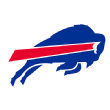
Buffalo Bills
Biggest hole: Wide receiver
We'll go into this with the idea that first-round draft pick Josh Allen is a stab at solving the quarterback problem, despite what our analytics have said. Let's move on to other issues. Buffalo's highest-regarded receiver, Kelvin Benjamin, spent last season dealing with a torn meniscus and caught 16 balls in six starts. The only other returning wideout in the top four in targets for Buffalo last season is Zay Jones, who had the worst catch rate in the NFL and was involved in a bizarre nude vandalism incident this offseason. By trading up for Allen and Tremaine Edmunds, the Bills ran themselves out of picks they could use to fix the wideout position. They were only able to throw late-round stabs at Ray-Ray McCloud and Austin Proehl. The good news is Allen has a track record of overcoming a bad supporting cast at Wyom ... oh, wait.
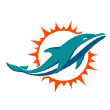
Miami Dolphins
Biggest hole: Offensive line
The Dolphins made some great picks as far as filling needs, but the interior of the line is still underwhelming and this team badly needs a better season from 2016 first-round tackle Laremy Tunsil. Daniel Kilgore, whom the team is relying on to replace Mike Pouncey, was brutal with the San Francisco 49ers in 2017 and had never started 16 games in a season before that. Josh Sitton sliding in for Pouncey should be a lateral move overall, assuming the 32-year-old doesn't lose anything to age. But outside of Sitton, there aren't any real strengths on this line. Anytime Ted Larsen is Plan A, you know the player development program has a few blind spots.
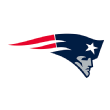
New England Patriots
Biggest hole: Edge rusher
It's often hard to identify holes with the Patriots because they've got a deep roster, but the area they're relying the most on for improvement this year is the edge spot (outside of Trey Flowers). Adrian Clayborn's big 2017 stat line came courtesy of Dallas coach Jason Garrett and the Chaz Green at Left Tackle Experiment. Deatrich Wise and Derek Rivers also deserve real cracks at the slot, and Rivers was highly touted coming out of college before missing all of the 2017 season. It's likely the Patriots will get something out of this spot. But with Flowers better suited as a second-banana rusher rather than the No. 1 guy, and the Pats' uncertainty at this slot otherwise, their pass rush could again be an issue.
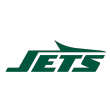
New York Jets
Biggest hole: Offensive line
At least we get to stop talking about the quarterback! Progress! The only move the Jets made on the offensive line all offseason was Spencer Long for Wesley Johnson, and that really didn't move the needle. Brian Winters struggled last season and has not lived up to his extension. Brandon Shell at right tackle combines the size of Art Shell with the football acumen of Art Alexakis. The only player on the line who played well last season was Kelvin Beachum, and he's always one snap away from the training table. Worst of all, there's no youth. The picks that could have been used to give this group an injection of talent were all made by the Colts instead. (The Jets gave up two second-round picks this year and one second-rounder in 2019 to move up three spots in the first round.) It was probably still the right move for the Jets, but this is going to be an ugly unit this season.
AFC North
By Charles McDonald

Baltimore Ravens
Biggest hole: Interior offensive line
The Ravens did well to secure their quarterback of the future by trading up for the electrifying Lamar Jackson, and they've thrown enough short-term solutions at wide receiver to at least have a competitive unit there. Where they're lacking is on the interior of their offensive line. Right guard Marshal Yanda is a Hall of Fame-caliber player, but Baltimore could use steadier options next to him. Center and left guard are manned by former undrafted free agents Matt Skura and Alex Lewis, respectively. There aren't any legitimate options in free agency to provide a serious upgrade for Baltimore, so this looks like a hole for them to patch up in 2019.

Cincinnati Bengals
Biggest hole: Right side of the offensive line
The Bengals do deserve some credit for what they've done this offseason. They finished the season with arguably no viable starters along the offensive line. They added a couple of pieces by trading for stud left tackle Cordy Glenn and drafting center Billy Price in the first round. However, they still have holes at right guard and right tackle that they need to patch up moving into the future. Right guard is likely to be manned by Trey Hopkins, an undrafted fifth-year player who moved into the starting lineup last year. Right tackle presents a camp battle between two disappointing 2015 draft picks, Cedric Ogbuehi and Jake Fisher, as well as former New York Giant Bobby Hart.

Cleveland Browns
Biggest hole: Left tackle
This one is fairly straightforward. Future Hall of Famer Joe Thomas retired, leaving the Browns with a gaping hole at left tackle. Right now, it seems like that void will be filled by 2016 third-round pick Shon Coleman, who played right tackle last season. Unless Coleman greatly exceeds expectations, the Browns might need to throw some extra help to the blind side to protect the winner of their quarterback competition, be it Tyrod Taylor or Baker Mayfield.

Pittsburgh Steelers
Biggest hole: Pass-rushing depth
The Steelers don't have many holes on their squad, but they could stand to upgrade their pass-rushing depth on the edge. T.J. Watt had a strong rookie season, but Bud Dupree has been up and down since arriving as Pittsburgh's first-round pick in 2015. Behind those two, the Steelers have Anthony Chickillo, a decent tertiary rushing option, and Keion Adams, a 2017 seventh-round pick.
The Steelers led the league in sacks and sack rate last season, but they were a bit too dependent on blitzes to amass that total -- Pittsburgh got 15 sacks from inside linebackers or defensive backs -- and Jacksonville was able to exploit their aggressive defense in the playoffs. If the Steelers want a more sustainable way of generating pressure, they should find a way to make their edge rush a bit more competitive.
AFC South
By Tom Gower

Houston Texans
Biggest hole: Offensive tackle
The Texans went into the draft without any sure answers at either offensive tackle spot and departed it in the same position. Third-round pick Martinas Rankin was a left tackle at Mississippi State, but Scouts Inc. projects him as an inside player in the NFL. General manager Brian Gaine has been noncommittal on whether Rankin will be a tackle or guard. Right now, it looks like Houston's starting tackles will be 2017 fourth-rounder Julien Davenport and Buffalo castoff Seantrel Henderson. Houston quarterbacks were sacked at the NFL's third-highest rate by adjusted sack rate last season. A similar fate seems likely in 2018.
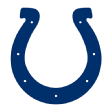
Indianapolis Colts
Biggest hole: Cornerback
The Colts fielded the worst pass defense in the league by DVOA in 2017, let their best cornerback walk, and did not add a starter in free agency. With extra second-round picks, general manager Chris Ballard had a golden opportunity to complete a secondary rebuild that started last year. Instead, he did not choose a cornerback with any of his 11 draft picks. Indianapolis is betting heavily on new defensive coordinator Matt Eberflus and his scheme, plus a pass rush that ranked second worst by adjusted sack rate last season, and the confidence imbued to the entire team by spending two high picks on guards to improve their pass blocking.
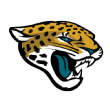
Jacksonville Jaguars
Biggest hole: Tight end
In their search for help for quarterback Blake Bortles, the Jaguars added wide receiver D.J. Chark in the second round but did not address tight end. Free-agent addition Austin Seferian-Jenkins is no more than a stopgap solution and was the least valuable receiving tight end in the league last season by FO metrics. He also probably is a downgrade as a blocker from Marcedes Lewis. As long as Bortles plays well, the weakness at tight end should not affect Jacksonville too much.
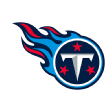
Tennessee Titans
Biggest hole: Wide receiver
Trading up three times left the Titans short on picks, and questions still abound at wide receiver for Tennessee. They start at the top of the depth chart with Corey Davis after an injury-plagued rookie year made him one of the least efficient receivers in the league. The Titans likely are to play more three-receiver sets, and third receiver is a complete question mark with three main contenders: unimpressive young players Tajae Sharpe and Taywan Taylor and serviceable slot option Michael Campanaro. The Titans went into the draft needing depth and quality at receiver, and they came out of it still needing both.
AFC West
By Derrik Klassen
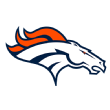
Denver Broncos
Biggest hole: Quarterback
Drafting a quarterback after having just paid Case Keenum would have been a tough sell. Keenum is good enough for the team to compete, and certainly is an upgrade over Trevor Siemian. However, the terms of a contract speak volumes about how a team views a player, and Keenum's contract does not scream long-term quarterback. When Minnesota was rostering Keenum for a roughly $2 million cap hit, not the $15 million and $21 million marks Denver is looking at, Keenum was a success. But if Keenum repeated his play in 2018 under his new contract, he would not be any sort of bargain.
The Broncos had three of the top quarterbacks fall to them at the fifth overall pick, yet they chose to ride with only Keenum. Maybe Denver is planning to give Keenum a real chance before committing to a new rookie, similar to what the Kansas City Chiefs did with Alex Smith. Whatever the plan might be, there is very little long-term certainty emitting from Denver's quarterback room right now.
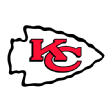
Kansas City Chiefs
Biggest hole: Cornerback
Kansas City's most notable offseason transaction at cornerback was swapping out Marcus Peters for Kendall Fuller via two separate trades. Fuller, though plenty talented, is not the same caliber of player as Peters. At best, it will be a lateral move for the Chiefs, still leaving them with a tattered secondary. The team also signed David Amerson, but that signing was more of a gamble on a flashy yet inconsistent veteran than anything of true substance. Kansas City's secondary headed into the NFL draft no better than it ended the 2017 season.
With that in mind, one would have hoped to see Kansas City address the position, but the Chiefs instead focused resources on the front seven. Tremon Smith, a sixth-round selection, was the Chiefs' only cornerback selection. As is the case with most late-round picks, Smith is not likely to have an immediate impact.
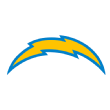
Los Angeles Chargers
Biggest hole: Off-ball linebacker
Similar to the division rival Chiefs, the Chargers opted to bolster areas of the defense except the one that seemed to be the biggest weakness. The Chargers drafted four defenders, yet none of them is an off-ball linebacker. Two safeties, an outside linebacker and a nose tackle will join the roster as rookies.
The most likely explanation for avoiding the position altogether is that the Chargers chose to draft the "best player available," not the top players at their most needy position. Safeties Derwin James (17th overall) and Kyzir White (fourth round) both seem to be fantastic values. Outside linebacker Uchenna Nwosu and defensive tackle Justin Jones were each selected in a fair range for their talents, but probably got the edge over a linebacker because of the value of defensive linemen and pass-rushers. However, if Denzel Perryman is sidelined by an injury for any extended period of time, the second level of the Chargers' defense will be a complete liability.
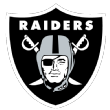
Oakland Raiders
Biggest hole: Off-ball linebacker
Oakland's defense was a massive work in progress heading into the draft. There was no way the Raiders could address every position of need. Like many other teams around the league, Oakland opted to bolster the defensive line and secondary rather than its linebackers.
The only draft resource Oakland put into the position was a sixth-round pick (Azeem Victor). While at Washington, Victor flashed talent early on, but he struggled to be a consistent player and was benched in his senior season. The Raiders might get lucky with a Vontaze Burfict situation out of Victor, but more than likely Victor is just a depth player.
That leaves Oakland's starting linebackers as Tahir Whitehead and Cory James, with Marquel Lee and Emmanuel Lamur in relief. Whitehead is a below-average, although functional, NFL starter. James is a backup-quality player, and Lee and Lamur are not the caliber of depth players to get excited about. Oakland's linebacker unit once again will be a weak point for the defense. The fan base can take solace in the rest of the defense getting help, but it will be tough to watch the linebackers this season.
NFC East
By Vincent Verhei
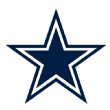
Dallas Cowboys
Biggest hole: Receivers
The Cowboys' receiving options weren't great even before they released Dez Bryant. With Bryant gone and Jason Witten retiring, the outlook is even more bleak. The top veteran wideouts on Dallas' roster -- Allen Hurns, Terrance Williams, Cole Beasley and Deonte Thompson -- have just one 1,000-yard season between them, and that was by Hurns three years ago in Jacksonville before injuries and circumstance sent him tumbling down the Jaguars' depth chart. Geoff Swaim, the likely starter at tight end now that Witten has announced his move to the TV booth, has all of nine catches in his three NFL seasons. Unless third-round rookie wide receiver Michael Gallup can outplay his draft status, the Cowboys will go into 2018 without a true No. 1 option at receiver.

New York Giants
Biggest hole: Pass-rusher
The Giants had a very busy offseason. Between free agency and the draft, they added new starters at wide receiver, left tackle, left guard, running back, defensive end and linebacker. In the process, though, they traded Jason Pierre-Paul to Tampa Bay. The long-term financial benefits of that move are clear -- the trade will save the team nearly $40 million in cap space over the next few seasons -- but in the short term it left New York woefully thin at the league's most important defensive position. Olivier Vernon's 44.0 career sacks are by far the most of any player on the Giants roster. Defensive back William Gay is next with just 7.0 sacks in his 11 NFL seasons. The outlook for Vernon is murky, too; he had just 6.5 sacks last season, and with James Bettcher installing a 3-4 base defense, Vernon will be moving to outside linebacker. Incoming rookie Lorenzo Carter had a great performance at the combine, but there is a reason he was available in the third round -- he never had more than 5.0 sacks in a season at Georgia.

Philadelphia Eagles
Biggest hole: Special teams
Nearly every starter on both sides of the ball will return from last season's championship team, and left tackle Jason Peters and quarterback Carson Wentz will return from injury. If anything, the Eagles should be more talented when they take the field against Atlanta in Week 1 than they were when they beat New England in the Super Bowl. The one clear hole on their roster is at punter, where they do not have a player who has ever appeared in a regular-season NFL game. Donnie Jones retired after the Super Bowl, then un-retired, but then the Eagles released him. Perhaps Cam Johnston, a former Aussie rules player who spent 2017 on the Philadelphia practice squad, will join the main roster in 2018. Meanwhile, the Eagles re-signed Darren Sproles to return punts this season, but can they really rely on a returner who turns 35 in June and is coming off a torn ACL?

Washington Redskins
Biggest hole: Cornerback
Few teams drafted better for need than Washington this year. In the first round, the Redskins tabbed Alabama defensive tackle Da'Ron Payne to plug their leaky run defense, and in the second they selected LSU running back Derrius Guice to boost their own ground attack. After that, however, they went offensive line, safety, nose tackle and linebacker, ignoring what might be a looming problem at cornerback this season. Josh Norman is coming off an odd year. Washington didn't give up many yards to opponents' top receivers, and quarterbacks didn't throw Norman's way very often -- but when they did, they averaged 10.5 yards per pass, half a yard more than any other starting cornerback, according to Sports Info Solutions charting. Norman will be 31 this season, and he could be in for a long year if the league realizes how many big plays he can surrender. Speaking of old cornerbacks who give up a lot of big plays, Dallas reject Orlando Scandrick (also 31) figures to be starting opposite Norman after Washington lost Bashaud Breeland and Kendall Fuller in the offseason. There's a lot of potential for disaster here.
NFC North
By Scott Kacsmar
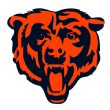
Chicago Bears
Biggest hole: Secondary
Chicago has totally revamped its wide receiving corps for Mitchell Trubisky in his second season. Not only did the Bears acquire Allen Robinson and Taylor Gabriel in free agency but they also made a move in the second round to draft Anthony Miller. The Bears also snagged another cornerstone linebacker in Roquan Smith with the No. 8 pick in the draft. However, there continues to be a lack of playmaking ability in the secondary, and none of Chicago's seven draft picks was used on a defensive back. The Bears have a league-low 24 interceptions on defense since 2015. Cornerback Kyle Fuller has a new long-term deal through 2021, but the Bears need more production from the secondary in a division with quarterbacks Aaron Rodgers, Matthew Stafford and Kirk Cousins.
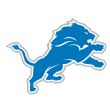
Detroit Lions
Biggest hole: Tight end
The Lions headlined their draft by strengthening the interior of the offensive line with Frank Ragnow in the first round. They also added Tyrell Crosby, who could go down as a fifth-round steal after he slipped a bit. In the second round, Detroit was faced with a dilemma. Athletic Penn State tight end Mike Gesicki went off the board at No. 42 to Miami. He could have been a fine replacement for an offense that let Eric Ebron go with the hopes that Luke Willson and Levine Toilolo will be more than stopgap additions. South Dakota State tight end Dallas Goedert (drafted No. 49 by Philadelphia) was still on the board, but ultimately the Lions traded up to No. 43 to draft Auburn running back Kerryon Johnson. Johnson is the latest candidate to try replacing the void Barry Sanders left last century. Let's hope Johnson has better luck than Kevin Jones, Kevin Smith, Jahvid Best and Ameer Abdullah. Injuries really impacted those players, and there are concerns about Johnson's frame holding up in the NFL. Perhaps the second-round pick could have best been used on a tight end, but Detroit continues to try to put a running game around Matthew Stafford as he enters his 10th season.
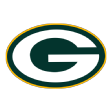
Green Bay Packers
Biggest hole: Guard
Green Bay entered this draft with significant needs at cornerback and wide receiver. The Packers certainly got the job done by starting with the selection of two cornerbacks: Jaire Alexander and Josh Jackson, who should both see plenty of snaps in their rookie seasons. A wide receiver was not drafted until the fourth round, but the Packers made sure to snag three for Aaron Rodgers to help develop. Equanimeous St. Brown could be a sixth-round steal.
Still, the key to any Green Bay season is keeping Rodgers healthy and his jersey as clean as possible. Once Rodgers broke his collarbone last year, Green Bay's playoff hopes were essentially dashed. The Packers did not draft an offensive lineman until the fifth round, and that was right tackle project Cole Madison. With Lane Taylor and Justin McCray as projected starters at guard, the Packers will have to wait until next offseason to improve the interior of the line.

Minnesota Vikings
Biggest hole: Guard
Minnesota has one of the strongest rosters in the NFL, but cornerback was a quiet need. Mike Hughes was drafted late in the first round to give the Vikings another option in the slot this season. (The Vikings also brought back veteran Terence Newman after the draft.) That leaves the question marks on the offensive line, particularly on the interior. The Vikings did draft Pittsburgh offensive tackle Brian O'Neill in the second round, but they did not draft a guard until Colby Gossett in the sixth round. Tom Brady aside, sixth-round picks rarely pan out as starters in this league. Guard remains the only position where the Vikings don't have a player of Pro Bowl caliber or high draft stock. Last season's starting right guard, Joe Berger, retired in the offseason. Nick Easton and Tom Compton are serviceable players with some starting experience, but that is the weakest link on a team that has serious Super Bowl aspirations.
NFC South
By Andrew Potter

Atlanta Falcons
Biggest hole: Untapped potential
For most of the past year, football questions in Atlanta have centered more on coaches than players. Offensive coordinator Steve Sarkisian has endured a lot of criticism already as the replacement for Kyle Shanahan, who endured harsh criticism of his own following that Super Bowl collapse. The team now has a hard-earned reputation for lulling opponents into a false sense of anxiety; no Falcons lead is ever considered truly safe. The Falcons remain a talented, youthful team with Super Bowl potential, and they replaced their major veteran departures with their top three picks in the draft. The remaining roster holes may be at fullback and perhaps backup quarterback, and that speaks volumes about the breadth of talent on the roster. Depth is a potential issue at several spots, but injuries are inherently unpredictable. The Falcons certainly have the players; the question now is whether the coaching will live up to the talent level.
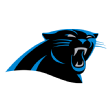
Carolina Panthers
Biggest hole: Guard
The Panthers addressed their biggest need with their first-round pick, snagging receiver D.J. Moore out of Maryland. They addressed another with their next two selections, a pair of defensive backs for their perennially improvised secondary. The one obvious area of concern they did not attack in the draft was the interior offensive line -- particularly the guard spot vacated by Andrew Norwell at the beginning of the offseason. The Panthers do have several young players who will compete with former Vikings backup Jeremiah Sirles for the starting role, but the depth chart contains no clear favorite and thus no obvious solution. The team already has added three guards as undrafted free agents, but hoping for another UDFA to replicate Norwell's success is probably a touch optimistic.
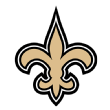
New Orleans Saints
Biggest hole: Tight end
The Coby Fleener era in New Orleans is technically still alive, but few people expect the highly remunerated veteran to be retained come the end of the offseason. Fleener has been a disappointment for the Saints, barely surpassing 900 receiving yards across his first two seasons combined. An inconsistent pass-catcher and barely existent blocker, Fleener never has been the caliber of player his yearly $7 million contract would demand. At 29, that is unlikely to change. Josh Hill and Michael Hoomanawanui are solid enough role players, but the Saints would benefit immensely from a true receiving tight end like ... well, like the recently returned Benjamin Watson, but 10 years younger. Enough other pieces are in place to make do with the existing depth chart, but the offense would certainly be enhanced by a reliable receiving tight end.

Tampa Bay Buccaneers
Biggest hole: Safety
The problems in the Buccaneers' secondary last season were so deep and widespread that it would be grossly optimistic to expect them to be solved with a single draft, absent a game-changing talent at cornerback. The Buccaneers spread several Day 2 and Day 3 picks across both cornerback and safety, hoping that enough slightly upgraded parts will combine to make a substantially better whole. Safety is still the weakest of those positions: Keith Tandy and Chris Conte probably will open the season as the second and third safeties on the team, with fourth-rounder Jordan Whitehead easing into the rotation unless he excels quickly. Last season's safety draftee, Justin Evans, was in the starting lineup by Week 5 and started 11 straight games; the weaknesses of the veteran incumbents give Whitehead every opportunity to follow in those footsteps.
NFC West
By Bryan Knowles
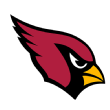
Arizona Cardinals
Biggest hole: No. 2 cornerback
Arizona did a good job matching early picks to its most significant needs. Josh Rosen is the first early-round quarterback the Cardinals have drafted since Matt Leinart in 2006. Christian Kirk might one day replace Larry Fitzgerald as Arizona's top receiver. Mason Cole could see some playing time on the interior of the offensive line. There just weren't enough picks to solve all their needs; something had to slip through the cracks. Patrick Peterson remains one of the best cornerbacks in the game, but there has been an ongoing struggle to find someone to pair him with. Justin Bethel was not the answer last season; he was replaced in Week 7 by Tramon Williams and wasn't really seen again. Both are gone, so it's back to square one. The top two options -- Bene Benwikere and Brandon Williams -- combined for 11 defensive snaps last season. Then there's Marcus Williams, who bounced between the Jets and Texans last season, and sixth-round pick Chris Campbell. There isn't a high-quality starter here, so it will remain the largest hole on an otherwise solid defense.

Los Angeles Rams
Biggest hole: Edge rusher
Rams fans got to celebrate their draft haul months ago. Rather than wait until draft day proper, the Rams used their 2018 draft picks as trade fodder, acquiring Brandin Cooks, Marcus Peters and Aqib Talib. The downside to all that talent coming in is that the Rams didn't really have the opportunity to fix any more needs in the draft. With Robert Quinn in Miami and Connor Barwin still unsigned, the Rams' leading returning edge rusher is Matt Longacre, with just 15.5 pressures last season, according to Sports Info Solutions charting. Longacre is really more of a rotational piece, someone who slides in and provides solid play while your actual weapons get some rest on the sideline. He'll be joined by last year's fourth-round pick, Samson Ebukam, and this year's fifth-round pick, Ogbonnia Okoronkwo, as Wade Phillips tries to turn top-tier athletic traits into on-field production. It's actually not that bad of a group; it just pales in comparison to the all-star squad Los Angeles has built on the defensive line and in the secondary.
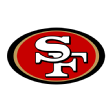
San Francisco 49ers
Biggest hole: Edge rusher
The 49ers did draft an edge rusher -- Kentavius Street in the fourth round. However, he'll miss the 2018 season with an ACL injury, so the 49ers will have to cobble together a pass rush for this season with pre-existing pieces. Their 2017 pressure rate of 29.4 percent (according to Sports Info Solutions charting) ranked 23rd in the league, their sack rate of 5.2 percent was 27th, and no individual pass-rusher hit 30 total pressures. Their leading outside pass-rusher, Elvis Dumervil, is still an unsigned free agent. There's a fair amount of work to do. San Francisco is counting on a pair of first-round talents providing more oomph in 2018. Solomon Thomas made plenty of tackles in the backfield in the running game as a rookie but had some growing pains as he transitioned to the outside in his first year in the NFL. Arik Armstead was beginning to show serious pass-rushing promise before a broken hand ended his season after just six games. The 49ers likely will need career years out of both players -- or from last year's midseason pickup, Cassius Marsh -- if they're going to be a serious playoff contender in 2018.

Seattle Seahawks
Biggest hole: Offensive line
Seattle's failure to find a developmental quarterback behind Russell Wilson means ... oh, who are we kidding -- it's the offensive line. Again. All we really need to do is update what we said at this point last year. Seattle now has given up 40 or more sacks in each of the past five seasons, the longest active streak in the NFL. They finished 31st in adjusted line yards and 26th in adjusted sack rate last season -- and that's with Wilson's Houdini routine making them look better than they were. And yet, they waited until the end of the fifth round before drafting a lineman, Ohio State's Jamarco Jones. That's too late to really project him as an impact starter as a rookie -- and Seattle really could have used a pair of new starters in this draft class. To be fair, the Seahawks haven't entirely ignored the offensive line this offseason. They added D.J. Fluker -- depth for most teams, an upgrade at guard for Seattle -- and replaced offensive line coach Tom Cable with Mike Solari. They'll also get a full season from Duane Brown, acquired in a midseason trade with Houston. Another year of experience can't hurt Ethan Pocic and Germain Ifedi, either. Still, there's every reason to expect we'll be here next year, with Seattle once again needing to beef up the offensive line to keep Wilson upright and healthy.
